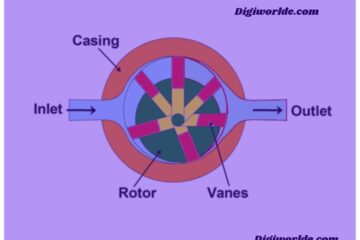Lobe Air Compressors; Best 02 Types of Lobe Air Compressors
Lobe Air compressors, also known as a rotary lobe compressor, is a type of positive displacement air compressor that uses two rotors with intermeshing lobes to compress air. These lobes rotate in opposite directions, creating pockets of air that are trapped and compressed as they move through the compression chamber.
Working Principle of Lobe Air Compressors:
Lobe Air compressors, also known as rotary lobe compressors, work on the principle of positive displacement. They compress air by trapping a fixed volume of air and then reducing its volume through the use of two rotating lobes. The lobes are shaped like cylinders with convex faces and are connected to a shaft that rotates within a casing. As the lobes rotate, they create pockets of low pressure that suck in air, and then the increasing distance between the lobes compresses the air. The compressed air is then discharged from the casing through an outlet port. The working of a lobe compressor is similar to that of a Roots blower.
Types of Lobe Air Compressors:
There are two main types of lobe air compressors:
Single Lobe Compressors:
These compressors have two rotors with a single lobe on each rotor that intermeshes to compress air. This design allows for low noise operation and is commonly used in applications where noise levels must be kept to a minimum.
Twin Lobe Compressors:
These compressors have two rotors with two lobes on each rotor that intermesh to compress air. This design provides higher efficiency and flow rates compared to single lobe compressors and is commonly used in applications where high flow rates are required.
Both types of lobe compressors are positive displacement compressors and are commonly used in a variety of applications, such as air conditioning and refrigeration, vacuum pumps, and pneumatic conveying systems.
Advantages of Lobe Air Compressors:
Lobe air compressors have several advantages over other types of compressors:
Reliability: Lobe compressors are known for their durability and reliability, making them ideal for continuous use in demanding industrial applications.
Efficiency: Lobe compressors are highly efficient and provide better energy consumption compared to other types of compressors.
Low Maintenance: They require low maintenance as they have fewer moving parts compared to other compressors.
Quiet Operation: Lobe compressors operate quietly, making them suitable for use in noise-sensitive environments.
Versatility: Lobe compressors can be configured to meet a wide range of air compression requirements, making them ideal for a variety of applications.
Cost-Effective: Lobe compressors are generally more cost-effective compared to other types of compressors, both in terms of initial investment and ongoing operational costs.
Disadvantages of Lobe Air Compressors:
There are several Disadvantages of Lobe Air Compressors:
High initial cost: Lobe air compressors can be more expensive than other types of air compressors, which can make them less affordable for some users.
Complex design: Lobe air compressors have a more complex design than other types of air compressors, making them more challenging to repair and maintain.
High power consumption: Lobe air compressors can consume more power than other types of air compressors, which can increase energy costs.
Limited pressure range: Lobe air compressors typically have a limited pressure range, which can limit their use in some applications.
Oil carryover: Lobe air compressors can produce more oil carryover than other types of air compressors, which can cause contamination in some applications.
Vibration: Lobe air compressors can generate more vibration than other types of air compressors, which can cause wear and tear on the equipment and surrounding environment.
Limited flow rate: Lobe air compressors typically have a limited flow rate, which can limit their use in some applications.
Space requirements: Lobe air compressors can be larger and require more space than other types of air compressors, which can limit their use in some applications.
Applications of Lobe Air Compressors:
Lobe air compressors are commonly used in a variety of applications including:
Food and Beverage Industry: In food and beverage production, lobe compressors are used to supply clean and oil-free air for packaging and pneumatic conveying systems.
Pharmaceutical Industry: Lobe air compressors are used to supply oil-free air in pharmaceutical manufacturing, which is essential for maintaining the purity of the final product.
Textile Industry: In textile production, lobe compressors are used to supply air for various processes such as spinning, weaving, and dyeing.
Paper Industry: Lobe compressors are used to supply air for processes such as pulp and paper production, drying, and transporting.
Waste Water Treatment: Lobe compressors are used to supply air for aeration in wastewater treatment plants.
Chemical Industry: In chemical production, lobe compressors are used to supply air for various processes such as agitation, transportation, and reaction promotion.
General Manufacturing: Lobe compressors are widely used in general manufacturing industries for a variety of applications including pneumatic conveying, blow molding, and vacuum lifting.
Safety Precautions of Lobe Air Compressors:
To ensure safe operation of lobe air compressors, the following safety precautions should be followed:
Proper training: All personnel who will operate the lobe compressor should receive proper training and be familiar with the equipment’s operating manual.
Proper protective gear: Personnel should wear protective gear, including eye protection and hearing protection, when operating the compressor.
Electrical safety: The compressor should be connected to a properly grounded electrical supply and all electrical components should be properly maintained.
Ventilation: The compressor should be installed in a well-ventilated area to prevent the buildup of harmful gases and ensure proper air circulation.
Pressure relief valves: The compressor should be equipped with properly functioning pressure relief valves to prevent over-pressure situations.
Regular maintenance: Regular maintenance should be performed to ensure the compressor is operating safely and efficiently. This includes checking for leaks, inspecting the air intake and discharge, and checking the oil level.
Emergency shut-off: The Lobe Air compressor should be equipped with an emergency shut-off switch in case of emergency.
Fire prevention: The compressor should be located in a fireproof area and fire extinguishing equipment should be readily available.
By following these safety precautions, the risk of accidents and equipment damage can be reduced, ensuring safe and efficient operation of the lobe air compressor.
In conclusion, Lobe Air compressors are a reliable and durable type of air compressor that are widely used in various industrial applications. They are capable of handling large volumes of air, delivering high pressures, and are relatively low maintenance. Their energy efficiency and environmentally friendly design make them an attractive choice for many industries.


0 Comments